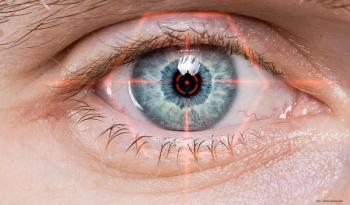
Mircochip helps blind cats see
A veterinary ophthalmologist from the USA is working on a microchip implant to help blind cats see.
A veterinary ophthalmologist from the University of Missouri, Columbia, USA is working on a microchip implant to help blind cats see, which may eventually be used in humans too.
Kristina Narfstrom works primarily with Abyssinian and Persian cats who are often affected by retinitis pigmentosa. Cat's eyes are good models as they are similar to the human eye in size and construction and share many of the same diseases that affect humans.
Implantation involves making two small cuts in the sclera and, after removing the vitreous, creating a small blister in the retina and a small opening for the microchip, which is just 2 mm in diameter and 23 µm thick. The chip contains several thousand microphotodiodes that react to light and produce small electrical impulses in parts of the retina.
It is hoped that this technology will be of benefit, not just to cats, but for humans and other animals too.
Newsletter
Get the essential updates shaping the future of pharma manufacturing and compliance—subscribe today to Pharmaceutical Technology and never miss a breakthrough.











































